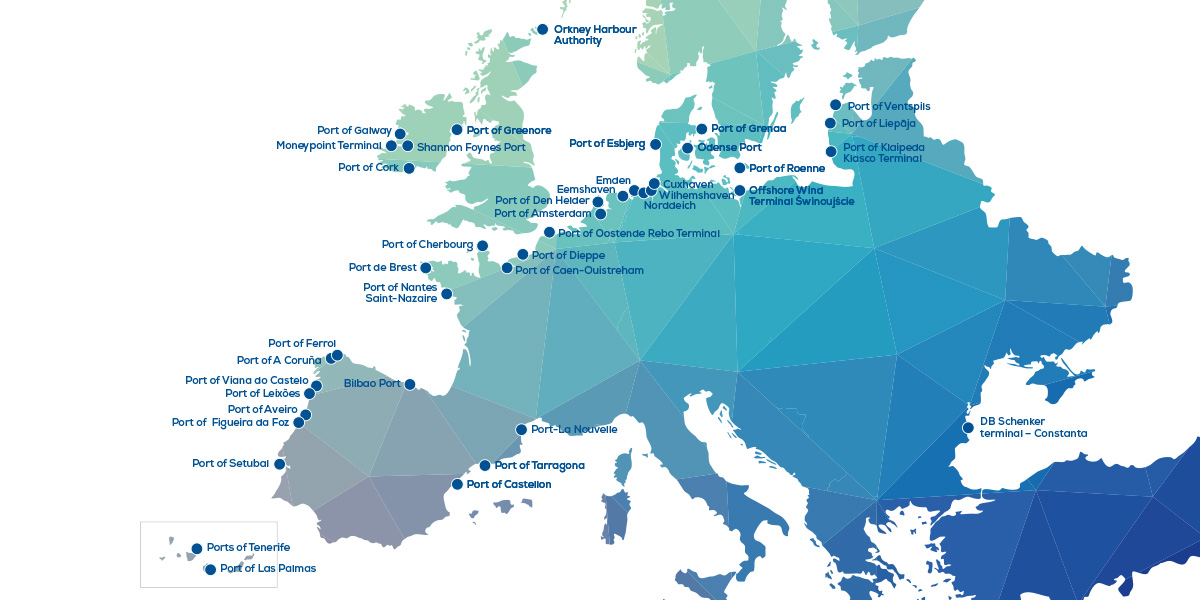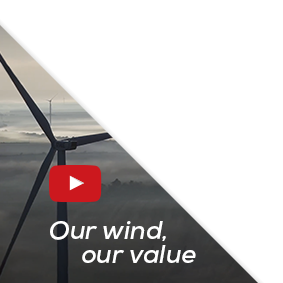
WindEurope brings together European ports serving the wind industry.
This platform aims to help port authorities to exchange best practice, know-how and to jointly discuss opportunities and challenges that ports face as the offshore wind industry grows.
In this edition, we’ll be giving you a roundup of the latest developments in ports across Europe – as they expand, invest and work together to deliver the energy transition.
Bilbao
The Port of Bilbao plays a key role in linking the dynamic Basque wind energy sector with the rest of Europe and beyond. Wind energy in the Basque Country employs 5,000 people, with a turnover of €1.18bn – and Bilbao ships 86% of Basque exports to the wider world.
The port itself is a key hub for transportation, storage, and handling and lashing of wind energy components – from nacelles to blades, bearings, bushings and towers. Nearly a dozen companies use the port as an infrastructure partner in their internalisation process.
And there are exciting new developments onsite. Haizea Wind Group – a key wind tower manufacturer – have signed a contract with Iberdrola to manufacture 50 monopiles, bringing a €150m investment in capacity expansion. These monopiles will be used for the 1.4 GW East Anglia Three offshore wind farm in the UK. Bilbao is also supporting leading-edge innovative projects such as bound4blue – supplying two 17-metre suction sails to a cargo ship in a world first. And finally port authorities have been making moves to decarbonise and electrify their activities – particularly through the BilbOPS project which aims to equip port terminals with OPS technology by 2026 (e.g. a PV plant for self-consumption).
Find out more about Bilbao here.
Esbjerg
With the Green Deal and REPowerEU, the North Sea is expected to see a huge buildout of wind energy in the coming decades – 134 GW by 2030, rising to 300 GW by 2050. Ports like Esbjerg around the North Sea will be instrumental in delivering this buildout.
The port of Esbjerg has recently signed an agreement with PensionDanmark to procure a €1bn investment in port development – strengthening its role in offshore wind, power-to-X and CCS (carbon capture & storage) deployment. The first phase will involve expanding offshore turbine production facilities – due to be completed by 2027 at a price tag of DKK 5.8bn. Then by 2028, terminals for power-to-X and CCS should be up and running – coming to DKK 700 million. The final DKK 500 million will help to expand and transform the port into a multimodal hub.
Find out more on this here.
Groningen Seaports – Eemshaven
The Port of Eemshaven in the Dutch province of Groningen has been a key staging ground for the construction of major North Sea projects – Hollandse Kust Noord, Gode Wind 3 and Borkum Riffgrund 3. In the case of the latter two, both located in German waters, Eesmhaven has been the primary hub for transporting and installing monopiles and secondary steel. 24 out of 107 monopiles have arrived so far, and are ready to move onto the project’s dedicated installation vessel.
Meanwhile the port itself has seen a number of key improvements to help facilitate these projects. New lanes have been added and roads have been widened to allow monopiles to be transferred more quickly.
More on Groningen-Seaports here.
Port Atlantique-La Rochelle
From 23-24 March 2023, Port Atlantique-La Rochelle organised the first edition of the annual Shipping Days exhibition – together with Maritime Kuhn Group and Union Maritime La Rochelle. The event drew 40 exhibitors and 580 visitors from across the general cargo, breakbulk and heavy lift sectors – with a conference focusing on offshore wind opportunities, digital technology and decarbonisation. A second edition is in the pipeline for 4-5 April 2024.
Find out more about the port here.
Brest
As an offshore wind hub servicing the Bay of Biscay, the Celtic Sea and the Western English Channel, Brest promises to be the core hub for several dozen GW of current and future wind energy potential.
On the back of this, a new terminal was installed in 2013 – including a heavy quay 400 metres long and an industrial area 40 hectares in size along the shore. Meanwhile, Brest has launched the InFloW (innovation for the floating wind industry) programme together with the port of Lorient – focusing on capacities for importing heavy components, reinforcing industrial areas, heavy load float-off capacities and floater wet storage capacity in Brest harbour.
Find out more about the Port of Brest here.
Castellón
Located on the east coast of Spain, the port of Castellón primarily focuses on bulk cargo – handling solid bulk, liquid bulk and general cargo. The port’s Octopus project – part of overall plans for expansion – aims to transform it into a logistical hub and to improve efficiency. This will mean 620,000 m2 of available land and 866 linear metres of new berths – with depths of up to 18.5 metres. This would make the port an ideal location for assembling and servicing floating offshore wind projects. As floating offshore wind potential grows year on year, Castellón is in a prime position to fuel this expansion in the Mediterranean.
More on the port of Castellón here.
Cork
The Port of Cork is just one of two in Ireland that can accommodate all six shipping modes. It has also been earmarked as a core port under TEN-T and a Port of National Significance by the Irish Government.
In May of this year, port authorities issued the Port Masterplan 2050, endorsed by the Government – setting out how Cork plans to meet Ireland’s future social, economic and environmental needs. The plan sees Cork playing a key role in the expansion of the Fixed ORE (Offshore Renewable Energy) sector. This is because Cork is the only port in Ireland with planning permission and foreshore contents needed to deliver appropriate port infrastructure for ORE by 2026. Cork has also been dubbed a “preferred port” for ORESS 1 developers off the south coast of Ireland – and the port has appointed EY to draw up a business plan to support the expansion of ORE in the years ahead.
More on the port of Cork here.


